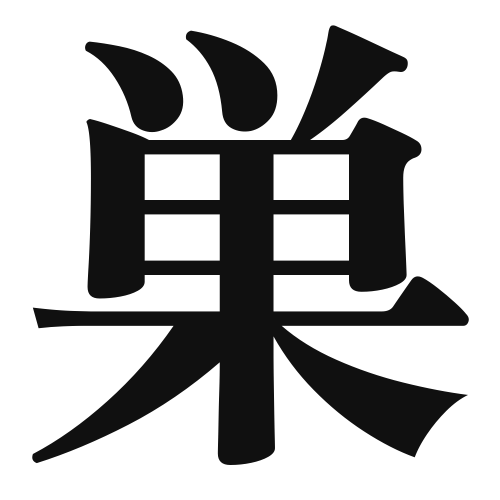1. Overview of Meaning
The kanji “巣” (su) means “nest.” It refers to a structure built by birds or other animals to lay eggs and raise their young. It can also be used metaphorically to describe a cozy or safe place.
2. Formation and Radical
Formation of the Kanji: The kanji “巣” is a compound character that combines elements representing a “house” or “shelter” with the idea of a “nest.” It is not a pictogram but rather a character that conveys a specific meaning through its components.
Radical: The radical for “巣” is “巾” (kin), which relates to cloth or covering, suggesting the idea of a protective space.
3. Examples of Usage
Common Words and Phrases:
- 鳥の巣 (tori no su) – bird’s nest
- 巣ごもり (sugomori) – staying indoors, hibernation
Example Sentences in Daily Conversation:
- 「公園で鳥の巣を見つけた。」(Kouen de tori no su o mitsuketa.) – “I found a bird’s nest in the park.”
- 「冬は家で巣ごもりするのが好きです。」(Fuyu wa ie de sugomori suru no ga suki desu.) – “I like to stay indoors during winter.”
4. Synonyms and Antonyms
Similar Kanji:
- 家 (ie) – house; refers to a building for living, while “巣” emphasizes a nest-like, protective space.
- 住処 (sumika) – dwelling; a broader term for a place where someone lives, not necessarily a nest.
Antonyms:
- 外 (soto) – outside; represents the opposite of a safe, enclosed space like a nest.
5. Cultural and Historical Background
Relation to Japanese Culture: In Japanese culture, nests symbolize safety and nurturing. They are often associated with family and home life.
Proverbs and Idioms:
- 「巣立ち」(sudachi) – refers to a young bird leaving the nest, symbolizing independence and growth.
- 「巣を守る」(su o mamoru) – means to protect one’s home or family.
